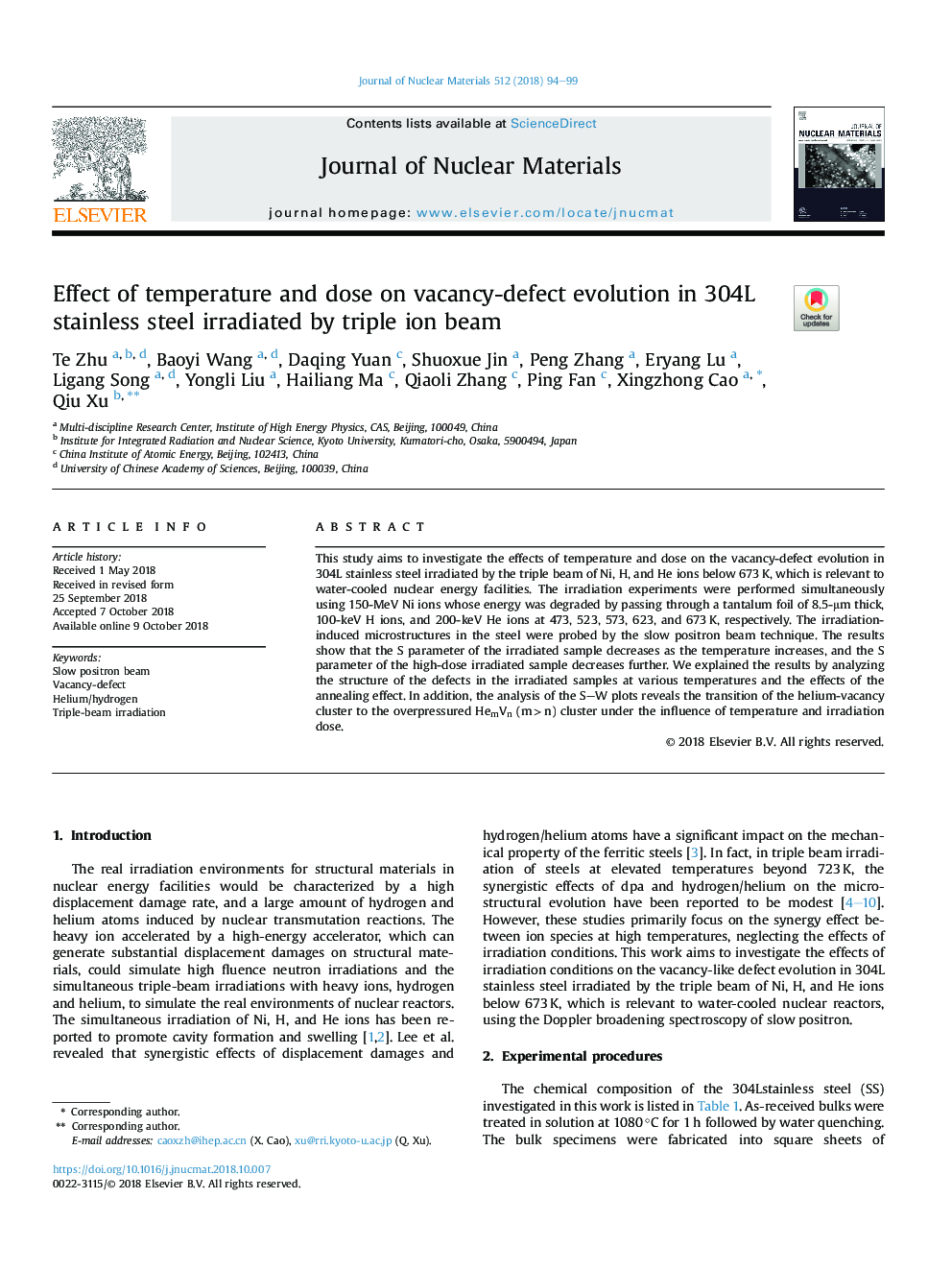| Article ID | Journal | Published Year | Pages | File Type |
|---|---|---|---|---|
| 11011336 | Journal of Nuclear Materials | 2018 | 6 Pages |
Abstract
This study aims to investigate the effects of temperature and dose on the vacancy-defect evolution in 304L stainless steel irradiated by the triple beam of Ni, H, and He ions below 673â¯K, which is relevant to water-cooled nuclear energy facilities. The irradiation experiments were performed simultaneously using 150-MeV Ni ions whose energy was degraded by passing through a tantalum foil of 8.5-μm thick, 100-keV H ions, and 200-keV He ions at 473, 523, 573, 623, and 673â¯K, respectively. The irradiation-induced microstructures in the steel were probed by the slow positron beam technique. The results show that the S parameter of the irradiated sample decreases as the temperature increases, and the S parameter of the high-dose irradiated sample decreases further. We explained the results by analyzing the structure of the defects in the irradiated samples at various temperatures and the effects of the annealing effect. In addition, the analysis of the SW plots reveals the transition of the helium-vacancy cluster to the overpressured HemVn (mâ¯>â¯n) cluster under the influence of temperature and irradiation dose.
Keywords
Related Topics
Physical Sciences and Engineering
Energy
Nuclear Energy and Engineering
Authors
Te Zhu, Baoyi Wang, Daqing Yuan, Shuoxue Jin, Peng Zhang, Eryang Lu, Ligang Song, Yongli Liu, Hailiang Ma, Qiaoli Zhang, Ping Fan, Xingzhong Cao, Qiu Xu,
